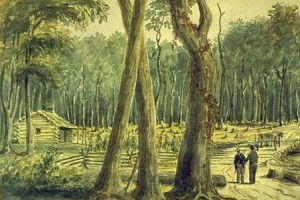Part A
Economy
- Clearing land to farm and build houses
- Fur trade (rural settings)
- Tenant farmers
- Farmers mortgaged their crops
- Trade with Britain and US
- Farming wasn’t always successful
- Absentee landlord (land speculators)
- Clergy reserves and government reserves tied up the best lands
Society
- Less interaction between of distance between neighbours
- Closer knit community
- Family background is very important
- Church is part of their routine (meet with neighbours)
- Quiet environment
- Religion holidays are when communities come together (music)
- Clear class structures
- Class boundaries are more obscured in Canada vs Britain
- Lower class wants democracy
- Class boundaries are more obscured in Canada vs Britain
Politics
- community leaders were loyalists families
- British army members lived in the towns
- had small schools with one teacher
- aristocrats ruled the colonies
- anti democratic
- Lower class wants democracy
- Upper class is in power
- Loyalty towards Britain
- Tenant farmers6
Farming
There are crops on the side of the house, stubs that resembles the cleared out forests, a pathway for travelling, a log house, 2 people one in a higher class then another. This is similar to their description in the textbook as the guy in the top hat is most likely the landlord, and the other is the tenant, who’s crops go to the landlord.

pioneer homestead, Chatham, Upper Canada 1828 P.J. Bainbrigge
Social Class
The guy in the top hat seems like the one who is in charge, there are a quite a few houses that are side by side with a lot of trees cut down in the background. One part of this picture that does not agree with the description in the book is that the houses are close together, whereas in the book houses are described as 30-40 km away from one another. The person in the top hat could resemble the landlord who might be part of the government, church, or just in a part of a high class, who is telling the tenant what to do, as it doesn’t not seem like they are trading.

Settlement on Long Island on the Rideau River, Upper Canada. Artist: Cockburn, James Pattison, 1779-1847. 1830
Religion
This seems to be the urban setting of upper Canada, more city like. You can see buildings and what looks to be a church in the centre of the town. There are people walking around in fancier apparel on a pathway and a bull pulling a cart full of goods. This image agrees with the description in the textbook because the church is showing the representation of religion in upper Canada. Everyone’s homes were so spread apart from one another, going to church was their time to get together with their neighbours, interact and socialize. This was what kept the community so close knit.

King St. E., looking e. from Toronto St., Young, Thomas, Year/Format: 1835, Picture
Land Issues
This picture shows the markings of the lots of land. The white represents the open lots, the black and grey represent the land that has been reserved for the clergy and government. This image agrees with the description of the textbook because it is representing land issues. The government and clergy got first choice on every seventh lot there was. This became problematic for the others purchasing the left over lots because the reserved lots were the better more fertile pieces of land, which left the people (particularly the farmers) with no fertile or good land.

Crown and Clergy Reserves, Newtown, Upper Canada, with one-seventh of the land held for clergy reserves, and one- seventh to produce government revenue, c. 1800. National Archives of Canada, NMC288
Loyalty to Britain
This picture is showing the parliament buildings of Upper Canada and br soldiers standing outside of it in a feild. This shows the texts books definition representing loyalty to Britain because the soldiers are wearing British uniforms and have come all the way to Canada to represent their country and try and make Canada just like Britain which shows dedication.

Houses of Parliament and Government Offices, Front Street West, Toronto, U.C., 1835 Thomas Young
Be First to Comment